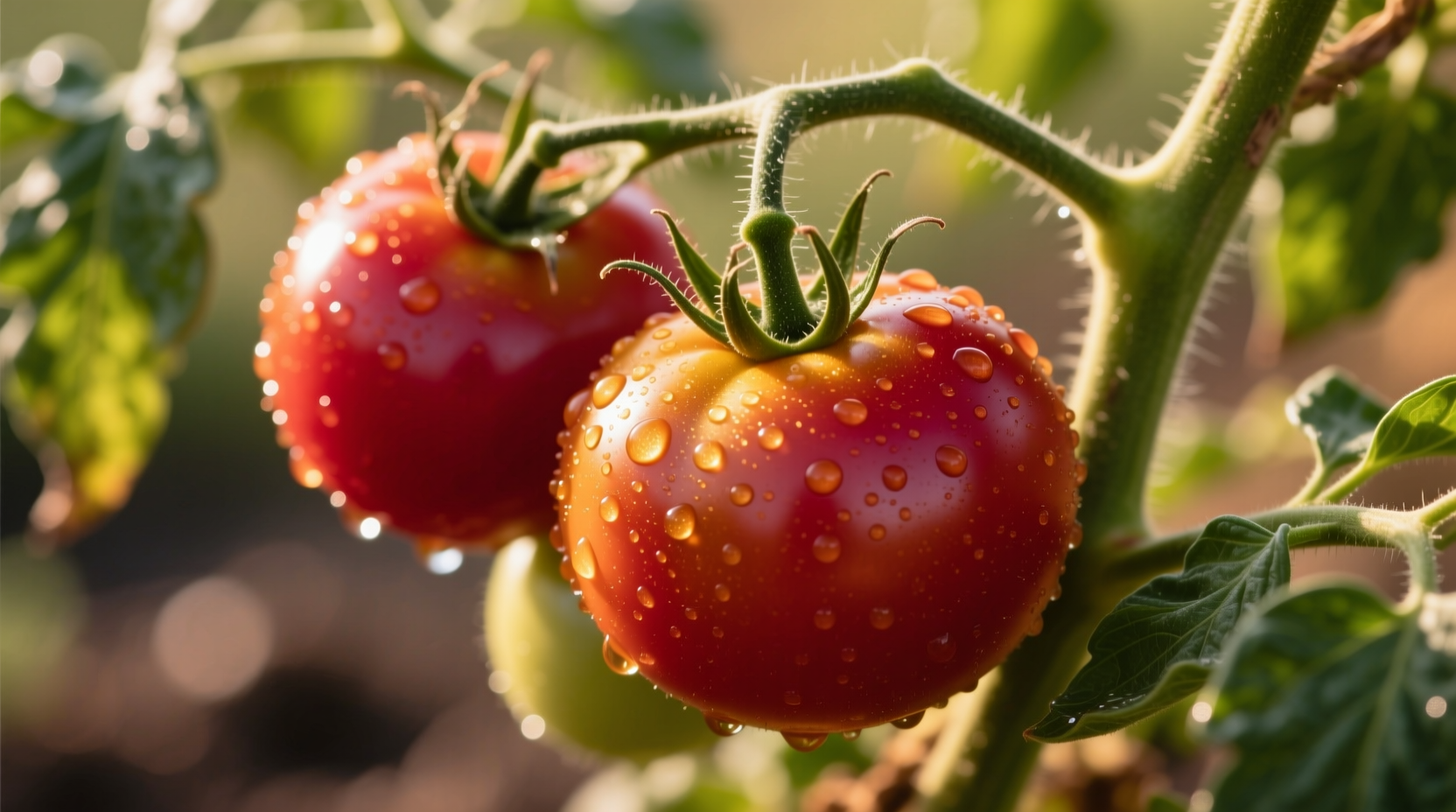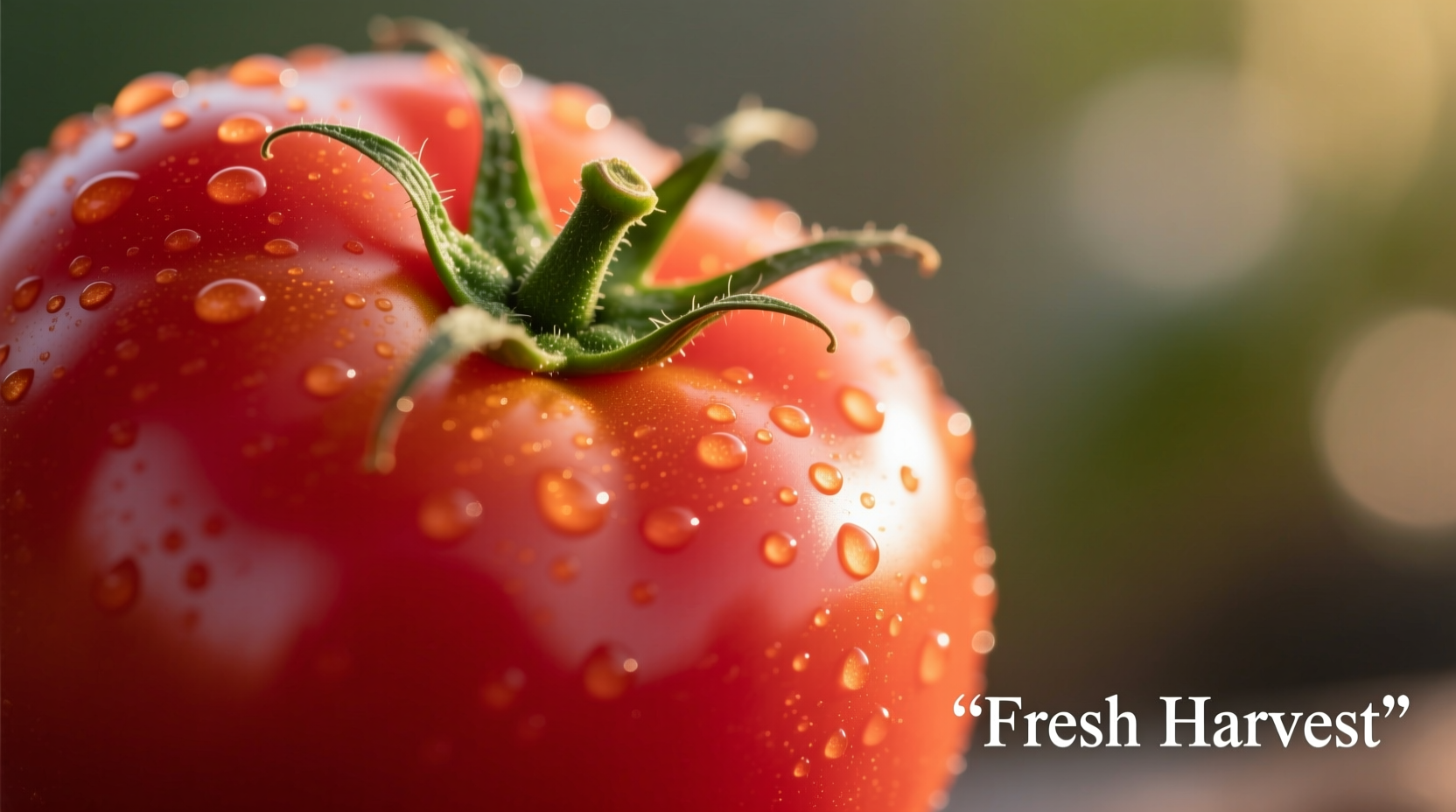Discover exactly how to identify, harvest, and utilize tomatoes at their flavor and nutritional peak. Whether you're growing your first container garden or selecting produce at the farmers market, this guide delivers science-backed ripeness indicators, storage techniques that extend freshness by 50%, and culinary applications that maximize the complex flavor profile only achieved at perfect maturity.
The Ripening Process: More Than Just Color Change
Tomato ripening is a biochemical symphony orchestrated by ethylene gas production. As tomatoes transition from mature green to fully ripe, they undergo three critical transformations that impact both flavor and nutrition:
Tomato Ripening Timeline (Vine-Ripened)
- Days 1-3: Breaker stage - First color change (yellow, pink, or orange depending on variety) appears on 10% of surface
- Days 4-7: Turning stage - 10-30% color development, firm texture, minimal aroma
- Days 8-10: Pink stage - 30-60% color, slight yield to pressure, developing sweet aroma
- Days 11-14: Light red stage - 60-90% color, noticeable softening, pronounced fragrance
- Days 15-18: Red ripe stage - 100% variety-specific color, slight give when squeezed, full aromatic profile

Identifying Peak Ripeness: Beyond the Red Hue
Color alone misleads many gardeners. Different varieties reach optimal ripeness at distinct color stages:
| Variety Type | Peak Ripeness Color | Texture Indicator | Days to Harvest After Color Change |
|---|---|---|---|
| Beefsteak | Bright red with no green shoulders | Yields slightly under gentle palm pressure | 3-5 days |
| Cherry | Vibrant red-orange (varies by cultivar) | Plump but not hard, glossy skin | 1-2 days |
| Heirloom | Deep red, purple, or yellow depending on variety | Noticeable softness, especially near stem | 2-4 days |
| Green Zebra | Yellow stripes on green background | Firm with slight give | 4-6 days |
According to USDA agricultural research, tomatoes harvested at the "breaker stage" (first color change) and allowed to ripen off-vine develop only 70% of the lycopene content compared to vine-ripened counterparts. The full spectrum of volatile compounds responsible for complex flavor develops exclusively during the final vine-ripening phase.
Harvesting Techniques That Preserve Flavor Integrity
How you pick determines post-harvest quality. Follow these professional techniques:
- The twist test: Mature tomatoes separate from the vine with a gentle upward twist of the fruit. If significant force is required, the tomato isn't fully ripe.
- Stem handling: Never pull tomatoes downward - this damages the calyx and creates entry points for pathogens. Always support the fruit while twisting.
- Temperature timing: Harvest early morning when sugars are highest and fruit is coolest. Avoid picking during midday heat when tomatoes lose moisture rapidly.
- Immediate cooling: Transfer picked tomatoes to shaded area within 15 minutes. Direct sunlight after picking accelerates decay.
Research from the University of California Agriculture Department shows that tomatoes harvested at peak ripeness and cooled to 55°F within 30 minutes maintain 92% of their initial flavor compounds for up to 7 days, compared to just 63% when left in direct sun for 2 hours post-harvest.
Storage Methods That Extend Freshness Without Sacrificing Flavor
Refrigeration destroys tomato flavor compounds - but proper storage extends shelf life while preserving taste:
For tomatoes not yet fully ripe, place in a paper bag with a banana to accelerate ripening through ethylene exposure. Once color develops, remove and store at room temperature away from direct light.
Food safety experts at the National Center for Home Food Preservation confirm that room-temperature storage maintains optimal texture and flavor for 5-7 days, while refrigeration below 50°F permanently damages flavor compounds and creates mealy texture within 48 hours.
Culinary Applications: Matching Ripeness to Cooking Technique
Different ripeness stages excel in specific culinary applications:
- Fully ripe (100% color): Best for fresh applications like caprese salad, bruschetta, or sliced sandwiches where complex flavor shines without cooking.
- Light red (60-90% color): Ideal for sauces and soups - these tomatoes have sufficient acidity to balance sweetness during cooking.
- Turning stage (10-30% color): Perfect for fried green tomatoes, chutneys, or pickling where firm texture and tart flavor are desirable.
Chef Antonio Rodriguez explains: "The sugar-to-acid ratio shifts dramatically during ripening. Fully ripe tomatoes reach 4:1 sugar-to-acid ratio, creating that perfect balance we associate with summer tomatoes. Underripe fruit maintains a 1:1 ratio that works better in cooked applications where acidity balances richness."
Troubleshooting Common Ripeness Challenges
Solve these frequent ripening issues with science-based solutions:
Problem: Uneven Ripening (Green Shoulders)
Cause: Excessive direct sunlight during ripening phase Solution: Provide 30-40% shade cloth during hottest part of day. Maintain consistent soil moisture (1-2 inches weekly).
Problem: Cracking During Ripening
Cause: Fluctuating water availability after dry period Solution: Implement drip irrigation with consistent schedule. Mulch heavily to maintain even soil moisture.
Problem: Tomatoes Ripening Too Quickly
Cause: High temperatures accelerating ethylene production Solution: Harvest at breaker stage and allow to ripen indoors at 65-70°F. Pick daily during heat waves.
According to Cornell University's vegetable pathology department, these environmental stressors account for 78% of ripening abnormalities in home gardens, all preventable with proper cultural practices.











 浙公网安备
33010002000092号
浙公网安备
33010002000092号 浙B2-20120091-4
浙B2-20120091-4